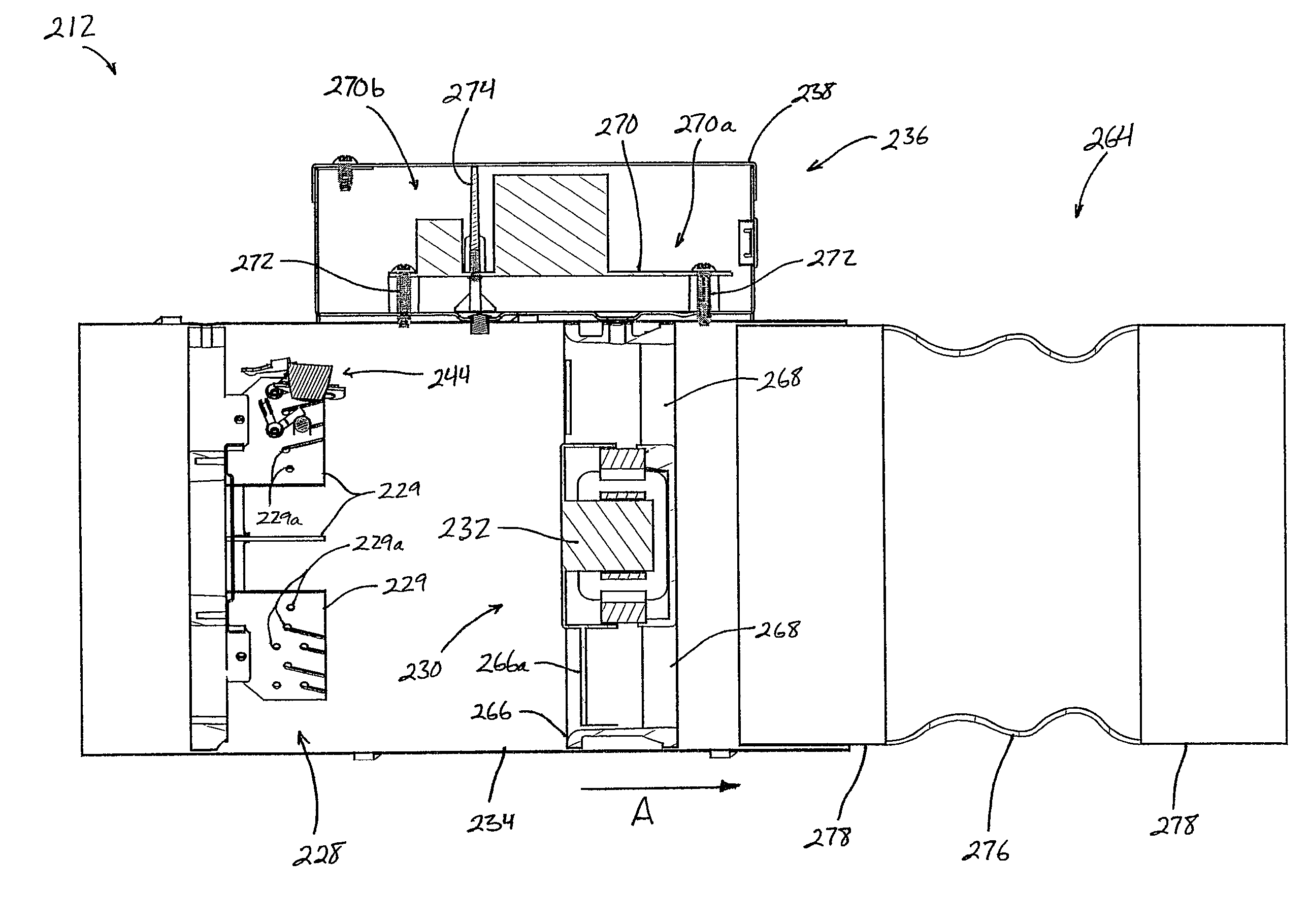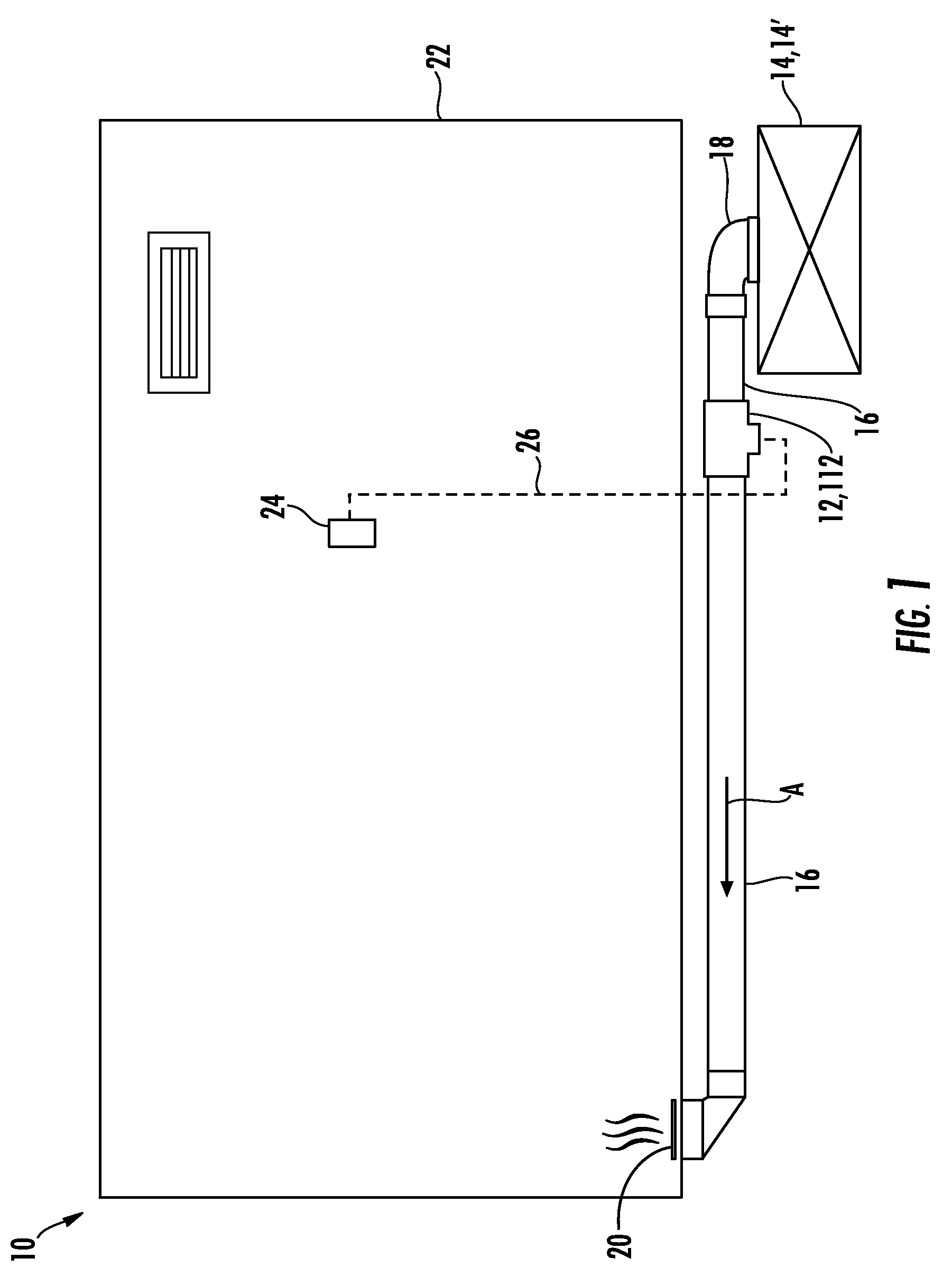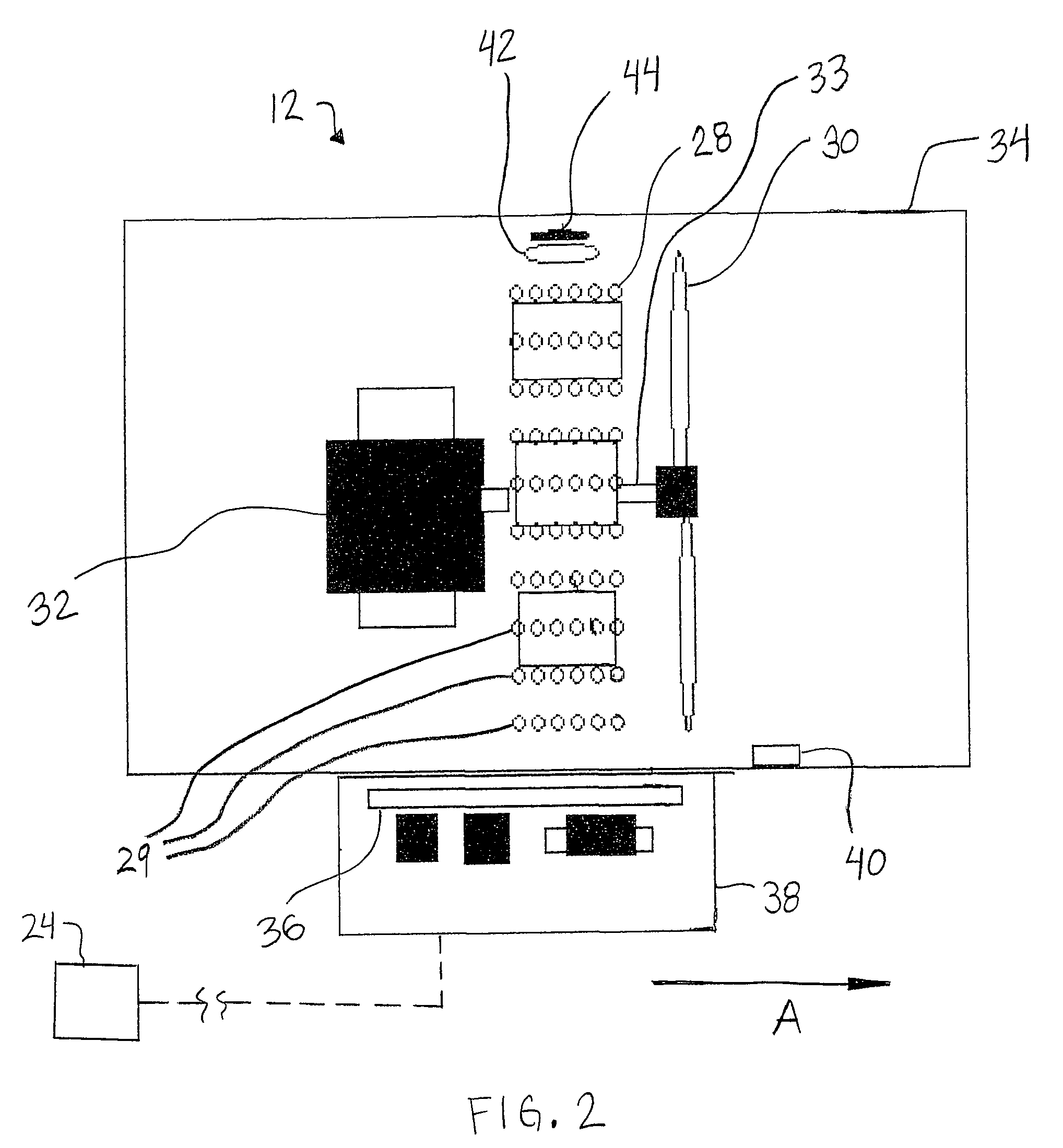In-line duct supplemental heating and cooling device and method
a technology of heating and cooling devices and in-line ducts, which is applied in the direction of heating types, instruments, static/dynamic balance measurement, etc., can solve the problems of not being able to individually activate and deactivate devices, types of devices are not able to also assist in cooling the room, and are difficult to heat, so as to prevent overheating of heater air or increase air circulation. , the effect of reducing the difficulty of heating
- Summary
- Abstract
- Description
- Claims
- Application Information
AI Technical Summary
Benefits of technology
Problems solved by technology
Method used
Image
Examples
Embodiment Construction
[0028]Referring now to the drawings and the embodiments illustrated therein, a system 10 for heating and cooling or conditioning a space, such as a room in a home or other building, includes an electric heating and cooling device 12 adapted to supplement a traditional or standard furnace 14 or air conditioner 14′ (FIG. 1). Heating and cooling device 12 is adapted to be at least partially mounted in an air duct, such as air duct 16 of a forced air duct system, which extends from furnace 14 or a cooling unit 14′ for transferring heated or cooled air to a room 22. Device 12 is especially useful for rooms that may be remote from furnace 14 (or an air conditioning unit 14′ that may be connected to and use duct system 16) at or near the end of duct system 16, where heating and / or cooling is / are less efficient than for rooms closer to furnace 14 and / or cooling unit 14′. Device 12 may also be useful for rooms that are large or that have a number of windows, which may make such rooms difficu...
PUM
 Login to View More
Login to View More Abstract
Description
Claims
Application Information
 Login to View More
Login to View More - R&D
- Intellectual Property
- Life Sciences
- Materials
- Tech Scout
- Unparalleled Data Quality
- Higher Quality Content
- 60% Fewer Hallucinations
Browse by: Latest US Patents, China's latest patents, Technical Efficacy Thesaurus, Application Domain, Technology Topic, Popular Technical Reports.
© 2025 PatSnap. All rights reserved.Legal|Privacy policy|Modern Slavery Act Transparency Statement|Sitemap|About US| Contact US: help@patsnap.com



